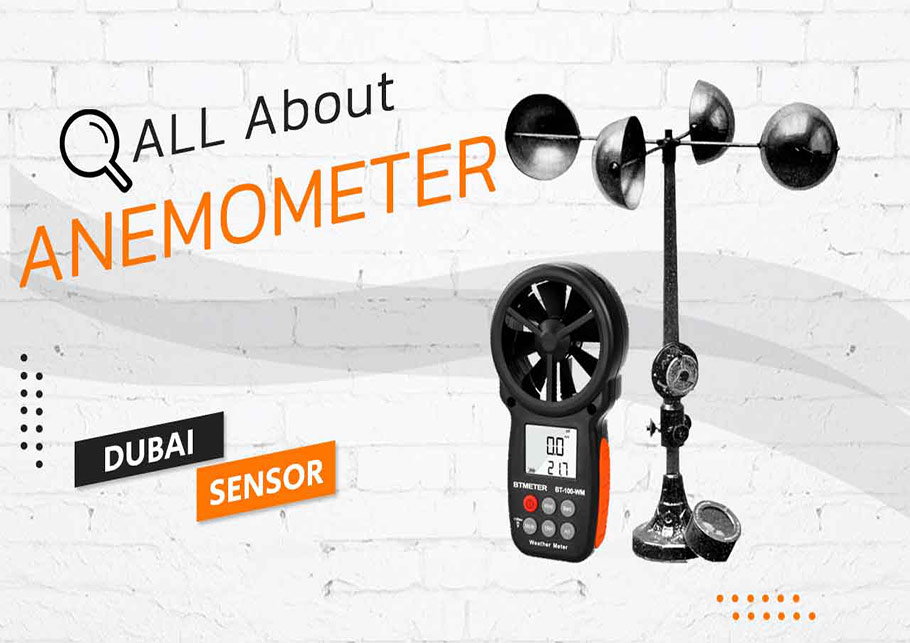Recognizing Various Sorts Of Anemometers for Different Applications
Recognizing Various Sorts Of Anemometers for Different Applications
Blog Article
All You Need to Learn About Anemometers: Exactly How They Function, Why They Issue, and Where to Use Them
Anemometers, however commonly overlooked in the world of scientific tools, play an essential duty in numerous areas, using useful insights right into wind rate and air flow patterns. As we dig right into the complexities of anemometer technology, we will certainly reveal the inner functions of these devices, their significance, and the vital factors to consider when choosing the ideal anemometer for details applications.

Anemometer Basics
A crucial instrument used to gauge wind speed and instructions, the anemometer plays a vital role in weather forecasting and different sectors. An anemometer usually is composed of three or 4 cups that turn in the wind, a vane that directs right into the wind, and sensing units to track the movements or turnings.
There are various sorts of anemometers readily available, including mug anemometers, vane anemometers, hot-wire anemometers, and sonic anemometers, each with its unique attributes and applications. Mug anemometers are commonly made use of for basic wind rate dimensions, while vane anemometers are favored for directional measurements. Hot-wire anemometers appropriate for low airspeeds, and sonic anemometers are suitable for high-precision measurements in research study and industrial settings. Recognizing the basics of anemometers is crucial for precise wind information collection and evaluation across different sectors.
Principles of Anemometer Procedure
Building on the foundational understanding of anemometer essentials, the principles of anemometer operation elucidate the technicians behind wind speed and direction measurements. Anemometers operate on the principle of air movement influencing a sensing unit, triggering it to rotate. Cup anemometers, as an example, have three or more cups that catch the wind, creating them to spin much faster as the wind rate rises. The turning speed is then exchanged a wind speed measurement. Vane anemometers, on the other hand, utilize a tail or a probe that aligns itself with the wind direction, offering a measurement of wind direction based upon the alignment of the sensing unit. Hot-wire anemometers depend on a warmed cable that cools off as wind passes over it, with the rate of cooling down establishing the wind rate. Ultrasonic anemometers action wind rate and direction by evaluating the time it takes for ultrasonic signals to take a trip between transducers. Understanding these principles is essential for accurate and dependable wind measurements in numerous applications.
Relevance of Anemometers
The relevance of anemometers in meteorology and numerous markets can not be overstated. Anemometers play a critical duty in determining wind speed and instructions, offering essential great post to read information for weather projecting, climate research studies, environmental tracking, and aviation procedures. Meteorologists rely upon anemometers to collect accurate wind information, assisting them understand weather condition patterns, anticipate tornados, and problem timely warnings to the general public. In sectors such as construction, farming, renewable resource, and maritime procedures, anemometers are utilized to optimize procedures, make certain safety and security, and enhance efficiency. Wind farm operators use anemometers to examine wind problems and take full advantage of electricity production from wind turbines. In the maritime field, anemometers aid ship navigation by offering real-time wind info to captains, helping them make educated choices to ensure safe voyages. On the whole, anemometers are important devices that add significantly to safety, effectiveness, and informed decision-making in weather forecasting and a large range of sectors.
Applications Across Numerous Industries
Applications of anemometers extend across diverse sectors, showcasing their convenience and utility past weather forecasting. In the renewable resource market, anemometers play a vital function in analyzing wind conditions for wind ranch placements, making sure optimal power production. Industries like building and construction and mining utilize anemometers to keep an eye on wind speeds, critical for security methods, especially when operating at heights or in open-pit mines where strong winds can posture risks. Anemometers are additionally essential in the air travel sector, helping pilots click this link in recognizing airspeed and wind direction for risk-free liftoffs and touchdowns. The maritime sector advantages from anemometers for ship navigating, helping seafarers prepare for weather adjustments and adjust courses appropriately. In farming, anemometers help farmers in taking care of crop splashing by offering real-time information on wind rate to prevent drift. Additionally, anemometers discover applications in HVAC systems to maximize air movement and improve power efficiency in structures. The varied usage instances of anemometers highlight their significance across different sectors, highlighting their vital function in enhancing functional safety and efficiency (anemometer).

Selecting the Right Anemometer for Your Demands
For general purposes, a cup anemometer is suitable for measuring wind speed, while a vane anemometer provides wind instructions information. Hot-wire anemometers are suitable for reduced airspeed measurements, and ultrasonic anemometers provide high accuracy and resilience.

Verdict
To conclude, anemometers play a vital function in measuring wind rate and instructions across various markets. Comprehending the concepts of anemometer procedure is crucial for picking the appropriate tool for details needs. From weather forecasting to aeronautics, anemometers are essential devices for gathering precise information and making certain safety in various applications. When picking the most suitable tool for gauging wind problems., it is important to think about the significance of anemometers in order to make educated choices.
There are different types of anemometers readily available, including cup anemometers, vane anemometers, hot-wire anemometers, and sonic anemometers, each with its distinct attributes and applications. Mug anemometers are typically utilized for standard wind rate dimensions, while vane anemometers are chosen for directional measurements. Hot-wire anemometers are appropriate for reduced airspeeds, and sonic anemometers are ideal for high-precision measurements in research study and commercial setups.Structure on the fundamental understanding of anemometer essentials, the concepts of anemometer procedure clarify the technicians behind wind rate and direction dimensions. For basic objectives, a mug anemometer is suitable for gauging wind rate, while a vane anemometer provides wind direction data.
Report this page